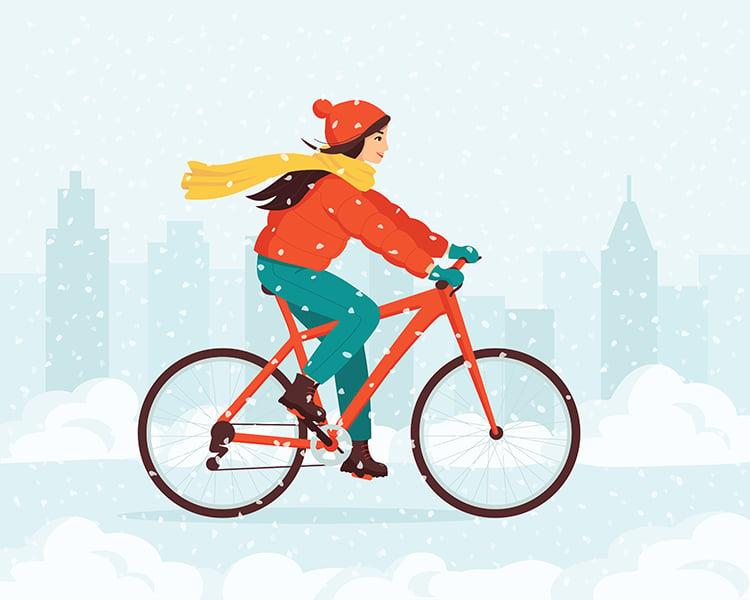 Norway is well known for its ambitious—and successful—efforts to promote greener, healthier lifestyles among its residents. From the deep-seated traditions of friluftsliv (outdoor life) and allemansretten (freedom to roam) to government subsidies for electric cars and bicycle commuting, modern Norwegian culture embraces a deep commitment to personal and environmental wellbeing. But the latest of these efforts may come as a surprise even among those who are accustomed to Norway’s overachieving outdoorsiness: Oslo is providing a generous subsidy to encourage winter bicycling—and it’s proving to be wildly popular.
Norway is well known for its ambitious—and successful—efforts to promote greener, healthier lifestyles among its residents. From the deep-seated traditions of friluftsliv (outdoor life) and allemansretten (freedom to roam) to government subsidies for electric cars and bicycle commuting, modern Norwegian culture embraces a deep commitment to personal and environmental wellbeing. But the latest of these efforts may come as a surprise even among those who are accustomed to Norway’s overachieving outdoorsiness: Oslo is providing a generous subsidy to encourage winter bicycling—and it’s proving to be wildly popular.
In October, the city of Oslo launched a subsidy program to reimburse ambitious cyclists for half the cost of equipping their bikes with studded tires, which provide much-needed extra traction on snow and ice. The subsidy applied not only to the tires themselves, but also to workshops for fitting and installing the tires. More than 4,000 people applied for the funds within the first five days, prompting city officials to expand the program to accommodate more riders.
Oslo, like many cities, has seen a substantial uptick in biking recently, with two-wheeled trips up by more than half over last year as of September. As Heidi Sørensen, director of Norway’s Climate Agency, told Norwegian newspaper Dagsavisen, “We want to give cyclists an opportunity to continue with the good trend in the winter.” The government hopes the program will help normalize winter cycling and demonstrate that it is not just for die-hard enthusiasts.
Winter riding tips for beginners
Studded tires can make a world of difference when biking in the winter, but there are other considerations to keep in mind as well—including comfort. Like other sports such as running or cross-country skiing, biking generates a lot of body heat, so it’s important to dress in layers and be careful not to bundle up too much; if you start out too warm, you will quickly overheat, and excessive sweating can leave you soaked and chilled. Fenders can help you stay dry and comfortable, too.
Depending on where you live and how you plan to ride, you may be able to try winter cycling without investing in a lot of new equipment. Winter conditions can be hard on bicycle components, so avoid using your primary bike if possible, and always clean it off as soon as you finish riding. If you have an old mountain bike with wide, knobby tires sitting around, that may work just fine unless conditions are particularly icy, giving you a chance to see whether it’s something you’d like to explore further. Keep the tire pressure low for maximum stability, and start slow—stick to trails and backroads while you get comfortable, and steer clear of busy streets.
